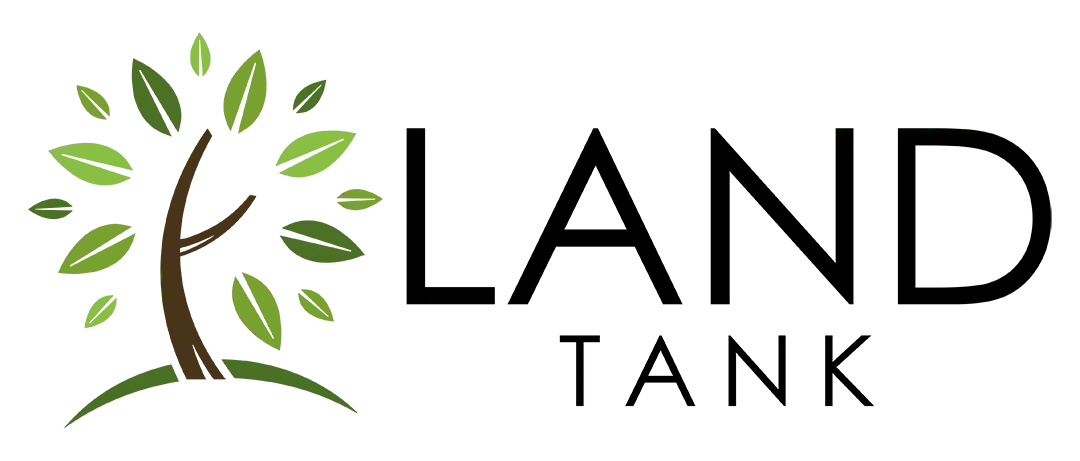I’m Steven Jack Butala.
I’m Jill DeWit, and this is the Land Academy Show.
This is episode number 2,129. Jill and I are talking about the land-related red-yellow-green test and picking the right counties to send mail. That’s what the red-yellow-green test is all about. Once again, this is a Land Academy product that Jill and I developed over the years.
You created this thing, which is brilliant, by the way.
It never had a name, and I never realized it was useful until we created Land Academy, started calling it something, and helped other people utilize it. If there’s any mystery at all associated with this product, we’ll clear it up.
Introduction To The Red-Yellow-Green Test
The bottom line is everything we do is data-focused because I’m sitting next to a data nut. The red-yellow-green test, in a nutshell, is using data to support your decisions when picking a county. That’s how I describe it. Make sure you’re doing the right thing. Some areas are green. Some areas are red. I know you’re going to go into a lot more detail on that.
This is very fitting because all of this week is called Land Research Week, and I’m extremely happy to report that, lately, our staff has been coming up with these topics, not Jill and I.
I don’t think I would have picked this.
Neither would I.
Land Research Week is called, that’s Steven’s side of the sheet. I don’t know where Jack’s side of the sheet is here. That’s funny.
Trust me.
Maybe mine’s coming.
I didn’t choose this because I would have chosen, if I had a say in it, it would all be Jill’s topics.
Thanks.
We’re talking about the red-yellow-green test. Tuesday, we’re going to talk about balancing data versus instinct in buying land. That’s Jill. There’s a lot of Jill in that. Wednesday is how technology is changing the future of land investing. That’s an ever-present, super important topic. Thursday, we talk about why research is the backbone of successful land investing, that’s for sure. Finally, Friday, avoiding analysis paralysis when land research becomes overkill.
These are good topics.
Understanding Active-To-Pending Ratio
To this day, guilty of that. Each day on the show, we answer a question from our Land Academy member Discord forum, and we take a deep dive into land-related topics by your request.
Mauricio wrote, “Greetings. I don’t understand why Jack said, ‘The active-to-pending number on the regular green test, lower is better.’ I think if more properties come pending, it’s a faster-selling area. Can you guys explain a little bit? Thank you.” We’ve got some people that already responded.
This is a very popular response topic. I only put one comment in here, but it’s perfect.
Members Brent and Kaylee responded to him and said this, “This confused me at first too, but then I realized pending is equal to sold on the Zillow search, and listed is equal to for sale on the Zillow search. Therefore, you want lower for-sale and higher sold. It is because lower for-sale properties mean you have less competition when it comes time to sell your property. Higher sold indicates the properties that do come on the market are selling. Altogether, this means land is selling faster than it’s being listed. That’s what we want. Basically, demand is higher than supply. I think I got that right.”
You got it right.
I’m new here. Any veteran, feel free to correct me.
I’m a veteran.
You’re the veteran.
Do not need to be corrected. I couldn’t have said it better myself. This is a perfect example of what the red-yellow-green test is all about. I hope this doesn’t confuse you. It’s technical. We have a ton of smart people in this group and a ton of various STEM-related analytical type people in our group. We have Jill’s people.
Please do go on.
Career salespeople that make all this shenanigans that I’ve come up with work. She creates real estate deals. She creates the real estate deals that I throw in her lap. That’s what happens.
That’s good.
We need each other with that. The red-green-yellow test. We’ll get into the topic here. Our topic, the land red-yellow-green test and how we pick the right counties to send mail. This is a very technical topic. If this is the first time that you’re reading, I’m sorry. Trust me, it will make sense in just a few seconds here. If we just look at, like the person who’s asking the question, if we just look at pending.
Hopefully, you all know that when you look at real estate data, even on Zillow or Realtor, specifically on Redfin, you can click a button that says, “Here’s my zip code,” or “Here’s my little town.” I want to only look at pending property, meaning property that’s under contract. That number is great. If you look at pending and there’s a lot of pending property, it means there’s high demand.
A lot of people want to move there, whether it’s land, houses, multifamily, mobile homes, or all of it. Lots of pending property is great. The person who asked the question is like, “Why is the new list-to-pending number, lower is better?” Here’s the deal. We look at that as a mathematical computation. We want to see that we look at not only just pending alone, but we bring in the number of newly listed properties.
We want lots of pending moving-out properties and fewer moving-in properties. Why? You’re going to send mail to that area. If you manage to purchase a property for 20% or 30% of its value, if it’s a piece of land, you have a darn good chance of lobbying it into a sales environment, where it’s going to sell quickly.
We don’t want to waste time sending mail to someplace in North Dakota, where there’s no population whatsoever and no real demand for property. We want to work on all that stuff prior to sending mail, prior to Jill doing her magic. She wants to know, “If it gets to my point and they want to sell a property, that everything else is taken care of.”
I think, just like for me to explain it, I throw out numbers. Wouldn’t you rather be 1 of 5 for sale in an area of this size and all of that good stuff in the zip code? Let’s just say 1 of 5 active properties where 25 sold in the last six months.
Yes. I would love that. That makes sense. Total common sense.
There you go. Think of it like that. That would be green. Let’s do the flip side. You’re one of 25 active for sale in the zip code, and five sold in the last six months. That’s going to be yellow or red, depending on how it aligns with the other ones. He’s the best. Red, there you go. Mic drop.
That’s a great way to explain it. The red-green-yellow test helps you to pull a topic together. It is three statistics that I initially came up with that rate each zip code that we think might be a good place to send mail against each other. What Jill just said is, if you have 5 or 8 zip codes all lined up in the red-green-yellow test, and you’re seeing who’s going to win, which zip code is going to be the worst, which zip code is going to be the best to send mail to, it’s based on what’s going on there for the for-sale statistics and active statistics.
One of the simplest statistics of the three is days on market. When you have a real low days on market against a real high days on market, that’s a darn good indication that property is moving better in that zip code because it’s just faster. It’s moving through faster. Another one is what we already talked about, new list-to-pending. Another one I love is all the properties that are listed for sale as a percentage of all the properties in the zip code.
To use Jill’s example, if you’ve got a hundred properties that are for sale in a zip code where there’s 25,000 total properties, that’s a tiny little percentage. You want that. That, to me, indicates that property is moving through there. If it gets listed, it gets sold. There’s not a lot of competition. Jill’s job just becomes, when she answers the phone, to see if they want to do the deal.
Lock in a good deal.
I’m not oversimplifying what she does, because what she does is create a real estate deal where there was not one.
Thank you.
Applying The Test To Real Estate Decisions
The red-green-yellow test is a fantastic way to decide whether or not sending mail to 1, 2, or 3 zip codes is a good idea. I’ll tell you this, and I don’t want to complicate things. We have many people in our group that have been around for years. Jill and I have been doing this for ten years this year.
Ten years of Land Academy.
Ten years of teaching. Thirty years before that. 20 or 25 years. Over those years, there’s been a lot of people that have been with us for ten years, and their red-green-yellow test doesn’t look like the one that we teach. It looks like a gobbledygook of 32 columns of information because our veterans in our group want to make sure where they’re sending mail is going to work out for them. I have a choice here. I could make the red-green-yellow test the 32 columns that I use too. We talk about those things in a mastermind group that Jill and I teach called Career Path, but it would scare everybody away.
As this show may have. Don’t worry. The bottom line is, we’re here. We’re here talking about it to coach you and help you get there. If this is something that you want to do, if you want to flip land like us, we’re making real smart decisions. No dart boards. We’ll talk about that, I think Tuesday, in the instinct. Instinct is not where the dart landed on the dartboard.
Speaking of that, I hope you join us again, where Jill and I discuss balancing data versus instinct in land investing. You are not alone in your real estate ambition. We are Jack and Jill, information and inspiration to buy undervalued property.















